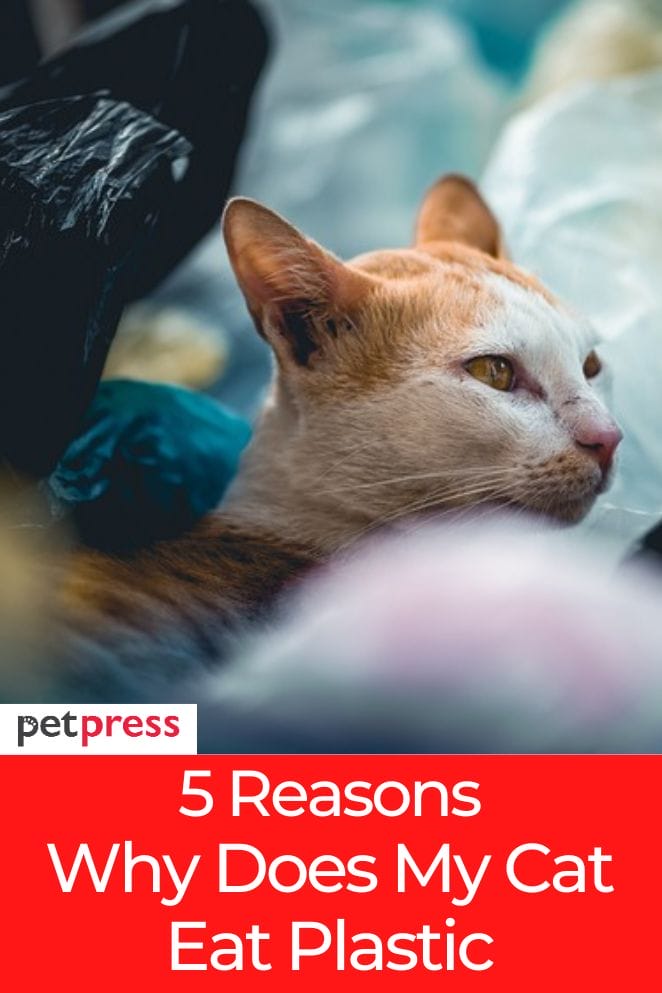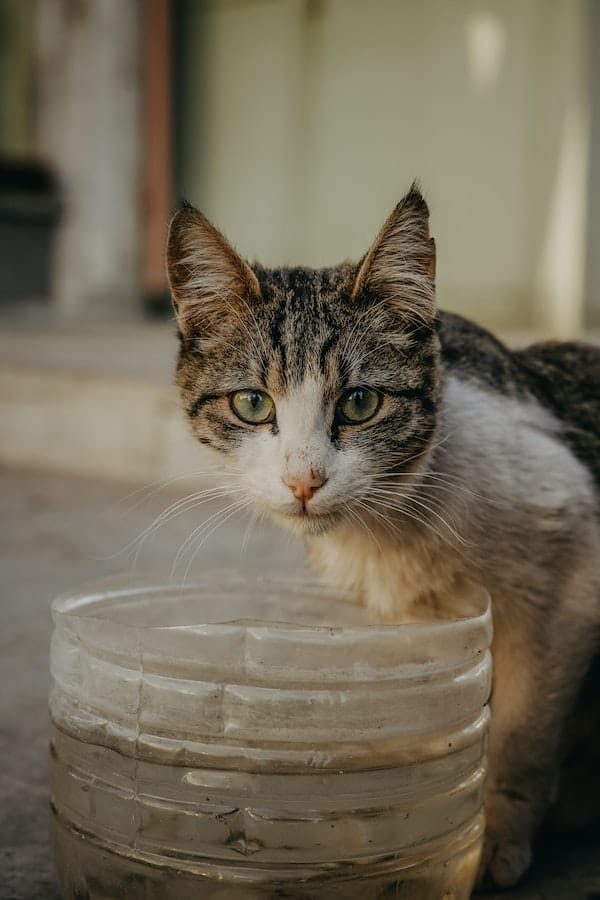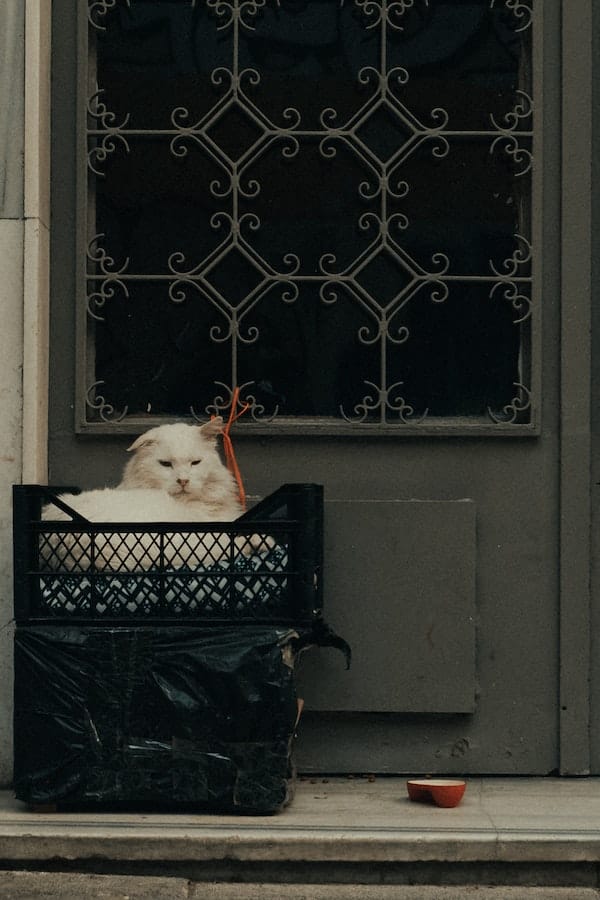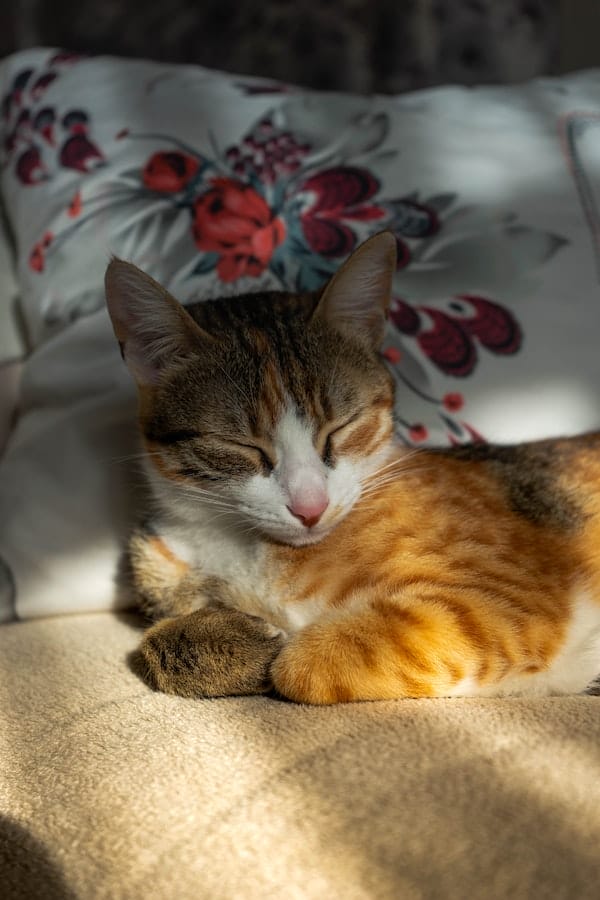
It can be concerning to discover that your beloved cat is eating plastic.
It’s understandable for a pet parent to worry about their cat’s health when such a strange and potentially hazardous behavior is observed.
In this article, we’ll discuss some of the possible causes behind cats eating plastic and how you can protect your pet from harm.
We’ll also provide some tips for discouraging cats from engaging in plastic-eating behavior.
With a better understanding of why cats eat plastic, you can work to ensure the safety and well-being of your feline family member.
What causes cats to eat plastic?

There are a few potential causes of cats eating plastic. These include:
Nutritional deficiencies
Nutritional deficiencies can be a factor when it comes to cats eating plastic.
Cats who eat plastic may be lacking particular nutrients in their diet, such as proteins, fats, vitamins, and minerals.
If your cat isn’t getting the nutrition they need from their regular food or treats, they may turn to other sources for sustenance – like plastic.
If you suspect that your cat’s plastic-eating habit is related to a nutritional deficiency, consider consulting with your veterinarian about changing their diet or supplementing their current regimen with nutrient-rich treats.
Boredom
Cats who are bored may turn to eating plastic as a form of self-soothing.
Many cats are highly intelligent and need to be kept busy, or else they may become restless.
If your cat is left with little to do throughout the day, it may try to find something of interest – such as plastic objects.
Providing toys, puzzles, and other sources of enrichment can help keep your cat mentally stimulated and discourage them from engaging in plastic-eating behavior.
Stress
Cats may also eat plastic as a way of dealing with stress and anxiety.
This is especially true for cats who have been adopted or are otherwise living in an unfamiliar environment.
To cope with their fear, cats may turn to familiar items like plastic, chewing or licking the material as a way of providing comfort and calming themselves down.
If your cat is engaging in plastic-eating behavior due to stress, consider taking some steps to make their environment more comfortable.
This can include providing hiding places and plenty of enrichment activities.
Curiosity
Cats are famously curious creatures, which can sometimes lead to them getting into mischief.
This can include chewing on and eating plastic objects.
If your cat is getting into things that they shouldn’t try redirecting their interest by providing them with safe toys to play with and chew on.
You may also want to make sure all plastic objects are out of their reach.
Taste
Finally, some cats may just find the taste of plastic appealing.
This could be due to a number of factors, such as mineral deficiencies or simply because they enjoy the taste.
If you think your cat is eating plastic for its flavor, try providing them with other objects that are safe for cats to chew on and which contain more palatable ingredients.
How can I discourage my cat from eating plastic?

Fortunately, there are a few steps you can take to discourage your cat from eating plastic. These include:
Make sure your cat is getting enough nutrients
Ensuring that your cat is getting all the necessary nutrients from its diet is important for protecting their health.
Talk to your veterinarian about if and how you may need to adjust your cat’s diet in order to provide them with the right amount of vitamins, minerals, proteins, and fats.
Provide plenty of enrichment activities
Try to make sure your cat has plenty of activities to keep it entertained and stimulated throughout the day.
This could include providing toys, puzzles, and other forms of enrichment. Additionally, spending time engaging in play with your cat can help satisfy its need for mental stimulation.
Reduce stress
Cats who are living in a stressful environment may resort to plastic-eating behavior as a way of self-soothing.
To reduce stress, consider providing your cat with hiding places and other sources of comfort.
Additionally, try to avoid making sudden changes to their environment or introducing new animals too quickly.
Keep plastic objects out of reach
Finally, make sure that all plastic objects are kept out of your cat’s reach.
This is especially important for objects like plastic bags, which can be fatal to cats if ingested.
By taking the necessary steps to ensure your cat is getting enough nutrition and providing it with plenty of enrichment activities, you can help reduce its need to seek out comfort in plastic objects.
However, if your cat continues to engage in this behavior, be sure to consult your veterinarian for advice.
What are the signs that your cat has ingested plastic?

It is important to distinguish between understanding the reason why your cat is consuming plastic and recognizing the symptoms of ingestion of inappropriate items.
Below are the indications to be vigilant about.
- Vomiting
- Diarrhea
- Loss of appetite
- Abdominal pain or tenderness
- Lethargy or fatigue
- Difficulty breathing
- Increased salivation
- Changes in behavior such as pacing, hiding, or aggression
- Straining to defecate
- Increased vocalization
If you notice any of these signs in your cat, contact your veterinarian immediately.
They will be able to assess the situation and provide guidance on what steps need to be taken next.
The takeaway
Eating plastic can be a serious health risk for cats, as it can cause blockages and other complications if not treated quickly.
To avoid this dangerous behavior, make sure to provide your cat with the nutrition they need, enrich their environment with toys and activities, reduce sources of stress in their environment, and keep all plastic objects out of reach.
If you suspect your cat has ingested plastic, be sure to contact your veterinarian right away.
With the proper care and attention, you can help keep your cat safe from harm and ensure they live a long and healthy life.


GIPHY App Key not set. Please check settings